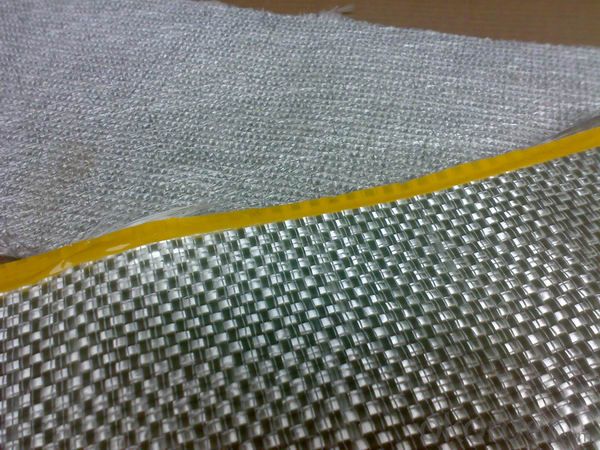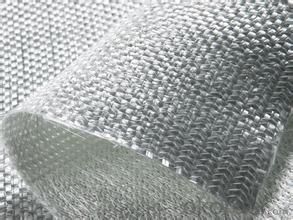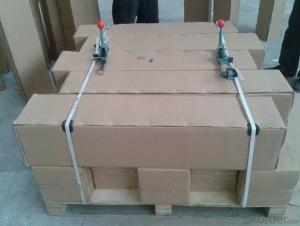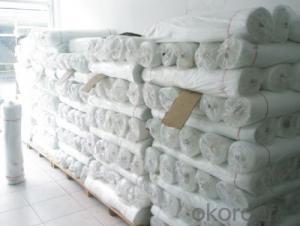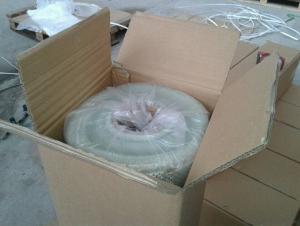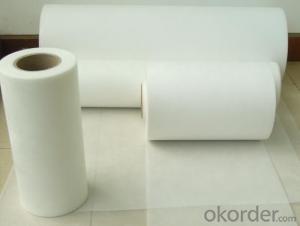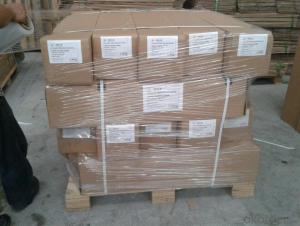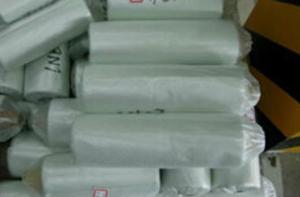Fiberglass Mat Tissue - E-Glass Fiber Woven Roving Fabric for GRP Usage
- Loading Port:
- Shanghai
- Payment Terms:
- TT or LC
- Min Order Qty:
- 16000 kg
- Supply Capability:
- 160000 kg/month
OKorder Service Pledge
OKorder Financial Service
You Might Also Like
Brief Description Of Products
E-Glass Woven Rovings are compatible with unsaturated polyester, vinyl ester, epoxy and phenolic resins.
E-Glass Woven Rovings are a high-performance reinforcement widely used in hand lay up and robot processes to manufacture boats, vessels, plane and automotive parts, furniture and sports facilities.
Warp and weft rovings aligned in a parallel and flat manner, resulting in uniform tension
Good moldability, fast and complete wet out in resins, resulting in high productivity
Good mechanical properties and high strength of parts
Product Specifications
Property | Area Weight | Moisture Content | Size Content | Width |
(%) | (%) | (%) | (mm) | |
Test Method | IS03374 | ISO3344 | ISO1887 | |
EWR200 | ±7.5 | ≤0.15 | 0.4-0.8 | 20-3000 |
EWR270 | ||||
EWR300 | ||||
EWR360 | ||||
EWR400 | ||||
EWR500 | ||||
EWR600 | ||||
EWR800 |
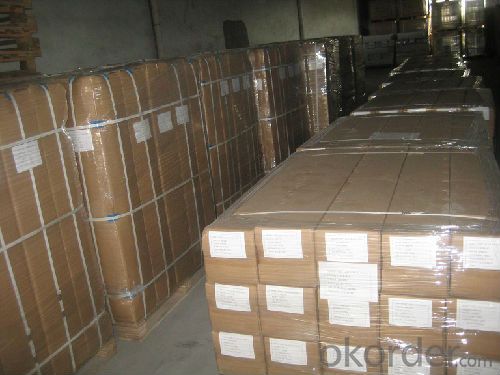
FAQ
Each woven roving is wound onto a paper tube which has an inside diameter of 76mm and the mat roll has a diameter of 220mm. The woven roving roll is wrapped up with plastic film,and then packed in a cardboard box or wrapped up with kraft paper. The rolls can be horizontally placed. For transportation, the rolls can be loaded into a cantainer directly or on pallets.
Unless otherwise specified,It should be stored in a dry, cool and rain-proof area. It is recommended that the room temperature and humidity should be always maintained at 15℃~35℃ and 35%~65% respectively.
- Q: How does fiberglass mat tissue compare to other insulation materials?
- Fiberglass mat tissue is a highly effective insulation material that offers several advantages over other insulation materials. Firstly, fiberglass mat tissue has excellent thermal insulation properties, which means it effectively prevents heat transfer and helps maintain a comfortable indoor temperature. This is particularly important in extreme climates where heat or cold can easily penetrate the building envelope. Additionally, fiberglass mat tissue is resistant to moisture, mold, and mildew, making it a durable and long-lasting insulation option. It does not absorb water, which helps to prevent the growth of mold and the degradation of the material over time. This is especially beneficial in humid environments or areas prone to moisture accumulation, such as basements or bathrooms. Furthermore, fiberglass mat tissue is non-combustible and has a high fire resistance rating. This makes it a safe choice for insulation, as it does not contribute to the spread of flames in case of a fire. It can also act as a barrier, preventing the fire from spreading to other areas of the building and offering occupants valuable time to evacuate. In terms of installation, fiberglass mat tissue is relatively easy to handle and install. It can be cut to fit any desired shape or size, allowing for flexibility during installation. It can also be used in various applications, including walls, floors, ceilings, and roofs, making it a versatile insulation material. Lastly, fiberglass mat tissue is an environmentally friendly option. It is made from recycled glass and sand, which helps reduce waste and conserve natural resources. It is also recyclable at the end of its lifespan, further minimizing its environmental impact. Overall, fiberglass mat tissue exhibits superior thermal insulation properties, durability, resistance to moisture and fire, ease of installation, and environmental sustainability, making it a highly favorable choice when compared to other insulation materials.
- Q: Can fiberglass mat tissue be used for insulation in refrigeration systems?
- Yes, fiberglass mat tissue can be used for insulation in refrigeration systems. It is a commonly used material due to its excellent thermal insulation properties and ability to withstand low temperatures. It helps to reduce heat transfer and maintain the desired temperature inside the refrigeration system.
- Q: How does the roll length of fiberglass mat tissue affect its handling?
- The handling of fiberglass mat tissue can be influenced by the length of the roll in various ways. To begin with, a longer roll length will result in a heavier and larger roll. This can pose challenges when it comes to handling and maneuvering, especially during transportation or when moving the roll to different locations. It may necessitate the use of additional manpower or equipment to ensure safe handling and movement of the roll. Moreover, the length of the roll can impact the ease with which the fiberglass mat tissue can be unrolled and cut to size. Longer rolls are more susceptible to tangling or becoming tangled, which can hinder the smooth and even unrolling of the tissue. Consequently, this can lead to wastage of material or uneven application. Furthermore, the length of the roll can also have implications for storage and space requirements. Longer rolls will occupy more space and necessitate larger storage areas. This is a crucial consideration for manufacturers or distributors dealing with large quantities of fiberglass mat tissue. In conclusion, the length of the roll for fiberglass mat tissue can affect its handling by increasing its weight and making it more challenging to maneuver. Additionally, it can lead to tangling during unrolling and require larger storage space.
- Q: Can fiberglass mat tissue be used for reinforcing fiberglass tanks?
- Certainly, fiberglass tanks can be reinforced using fiberglass mat tissue. Fiberglass mat tissue, a lightweight and thin material, is commonly utilized in the construction of fiberglass products. Its purpose is to fortify the fiberglass structure, offering added durability and strength. In the specific case of fiberglass tanks, the mat tissue serves as a layer of reinforcement, further enhancing the tank's overall structural integrity. This reinforcement assists in preventing cracks, improving impact resistance, and augmenting the tank's ability to withstand external forces and pressure. Moreover, fiberglass mat tissue boasts ease of use, enabling simple molding or application onto the tank's surface, thus rendering it a suitable choice for tank reinforcement.
- Q: Can fiberglass mat tissue be used for bridge deck rehabilitation?
- Indeed, bridge deck rehabilitation can utilize fiberglass mat tissue. Known for its exceptional strength and durability, this versatile material is commonly employed in construction endeavors, including the restoration of bridge decks. Its primary function is to reinforce and fortify existing structures. Bridge deck rehabilitation encompasses the process of rectifying and rejuvenating a bridge deck that has undergone deterioration over time. Typically, this procedure necessitates the removal of damaged concrete, the application of a fresh concrete layer, and the reinforcement of said layer with materials like fiberglass mat tissue. The utilization of fiberglass mat tissue as a reinforcement material in bridge deck rehabilitation is widespread due to its exceptional mechanical properties. Its high tensile strength plays a vital role in augmenting the load-bearing capacity of the bridge deck. Moreover, its corrosion resistance is especially crucial for bridge decks exposed to harsh weather conditions and chemicals. Additionally, fiberglass mat tissue is easily installed and adaptable to bridge decks of varying shapes and sizes. It can be embedded into the new concrete layer during the construction process or applied as an overlay onto the existing deck. This flexibility renders it an ideal choice for bridge deck rehabilitation projects. In conclusion, fiberglass mat tissue is, indeed, an appropriate material for bridge deck rehabilitation. Its robustness, endurance, and corrosion resistance make it an effective reinforcement material for repairing and fortifying bridge decks. Furthermore, its straightforward installation process and versatility further enhance its suitability for this specific application.
- Q: How does fiberglass mat tissue perform in terms of moisture absorption?
- Fiberglass mat tissue performs exceptionally well in terms of moisture absorption. Due to its composition of multiple layers of glass fibers and a binder, it can effectively resist moisture penetration, making it highly resistant to water absorption. This property makes fiberglass mat tissue an ideal material for various applications where moisture resistance is crucial, such as in roofing, insulation, and composite manufacturing.
- Q: Are there any environmental considerations when using fiberglass mat tissue?
- Yes, there are several environmental considerations when using fiberglass mat tissue. Firstly, the production of fiberglass mat tissue involves the use of energy and resources. The manufacturing process requires the extraction of raw materials, such as silica sand, limestone, and soda ash, which are non-renewable resources. The energy-intensive process of melting these materials at high temperatures also contributes to greenhouse gas emissions. Additionally, the production of fiberglass involves the use of chemicals, such as resins and binders, which can be harmful to the environment if not properly managed. These chemicals can potentially leach into water bodies or soil if not handled and disposed of correctly. Furthermore, fiberglass mat tissue is not biodegradable. Once it reaches the end of its lifespan, it can take hundreds of years to break down in a landfill. Improper disposal of fiberglass mat tissue can lead to environmental pollution and contribute to the growing problem of waste management. Lastly, the use of fiberglass mat tissue in certain applications, such as insulation or construction, can have energy efficiency implications. While fiberglass is an effective insulator, its production and installation may require additional energy inputs, such as the use of fossil fuels for transportation or heating during installation. To mitigate these environmental considerations, it is important to promote sustainable practices in the production and use of fiberglass mat tissue. This can include implementing energy-efficient manufacturing processes, reducing the use of harmful chemicals, promoting recycling or reuse of fiberglass materials, and exploring alternative materials that have a lower environmental impact.
- Q: Can fiberglass mat tissue be used for insulation in hot climates?
- Certainly! Fiberglass mat tissue is applicable for insulation purposes in hot climates. Fiberglass possesses remarkable thermal insulation characteristics that render it suitable for both cold and hot environments. In hot climates, fiberglass insulation effectively impedes the transmission of heat from the external to the internal areas of a structure, thereby ensuring a pleasant indoor temperature. It functions as a shield by minimizing the conduction, convection, and radiation of heat. Moreover, fiberglass insulation exhibits fire resistance, durability, and non-absorbency, thus establishing itself as an optimal option for insulation in hot climates.
- Q: How does fiberglass mat tissue compare to cellulose insulation?
- Fiberglass mat tissue and cellulose insulation differ in terms of material composition and insulation properties. Fiberglass mat tissue is made from fine glass fibers, while cellulose insulation is composed of recycled paper fibers treated with fire-retardant chemicals. Fiberglass mat tissue offers higher R-value, meaning it provides better thermal insulation and energy efficiency. Additionally, it is resistant to moisture and does not promote mold growth. On the other hand, cellulose insulation is more affordable, environmentally friendly, and provides better sound insulation. Ultimately, the choice between the two depends on specific insulation needs, budget, and environmental considerations.
- Q: Can fiberglass mat tissue be used for interior decoration?
- Fiberglass mat tissue is an excellent option for interior decoration. This versatile material serves multiple purposes and is commonly utilized as a reinforcement for composite materials like fiberglass reinforced plastic (FRP). These materials are often employed to create decorative elements such as panels, wall coverings, and moldings. The fiberglass mat tissue offers a lightweight and durable solution with exceptional strength and resistance to moisture and chemicals. Moreover, it can be easily molded into various shapes and designs, making it a favored choice for interior decoration projects. Furthermore, the fiberglass mat tissue can be coated or painted to match any desired color or texture, enabling a wide array of creative possibilities in interior design.
Send your message to us
Fiberglass Mat Tissue - E-Glass Fiber Woven Roving Fabric for GRP Usage
- Loading Port:
- Shanghai
- Payment Terms:
- TT or LC
- Min Order Qty:
- 16000 kg
- Supply Capability:
- 160000 kg/month
OKorder Service Pledge
OKorder Financial Service
Similar products
Hot products
Hot Searches
Related keywords




